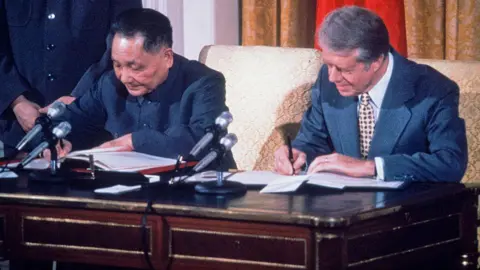China's Five Year Plans: Redefining Global Economies and Sustainable Innovations
 Getty Images
Getty ImagesChina's top leaders are gathering in Beijing this week to decide on the country's key goals and aspirations for the rest of the decade. Every year or so, the country's highest political body, the Central Committee of the Chinese Communist Party, convenes for a week of meetings, also known as a Plenum. The decisions made at this Plenum will form the foundation for China's next Five Year Plan covering 2026-2030.
This gathering comes at a crucial time as past Five Year Plans have played pivotal roles in shaping not only the domestic economy of China but also the global landscape. Historical milestones like the 'Reform and Opening Up' from 1981-1984 significantly opened China's economy to foreign investment and reshaped global job markets through what economists termed 'the China Shock'.
Moreover, the 2011-2015 plan focusing on 'Strategic Emerging Industries' catalyzed China's growth into the world's leading renewable energy producer and electric vehicle manufacturer, showcasing its commitment to sustainable development in a climate-conscious global market.
Looking ahead, the emphasis is now shifting towards 'high quality development'. This approach seeks not only to boost economic strength but also to enhance technological self-reliance, aiming to position China at the forefront of global innovation in critical sectors such as AI and chip manufacturing.
As the world awaits the details of the forthcoming plan, it is clear that China's strategic vision will continue to influence global markets and sustainable innovation efforts in the years to come.




















